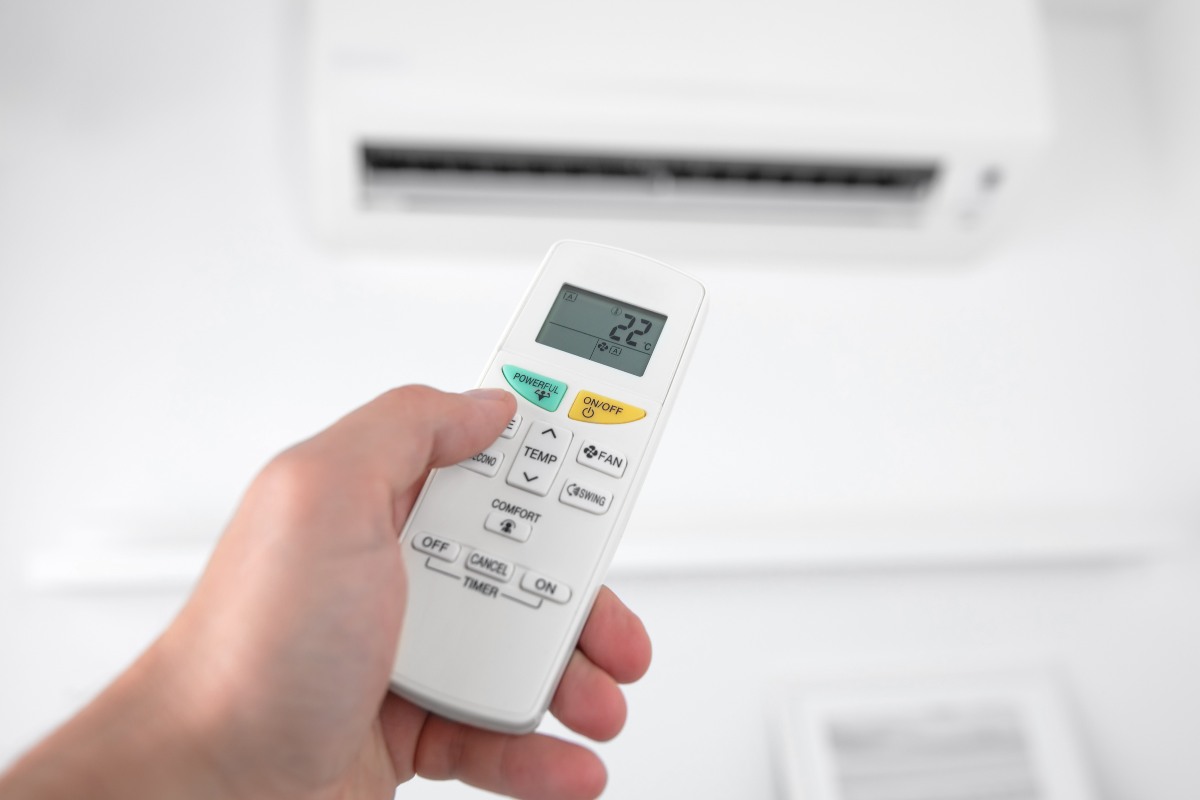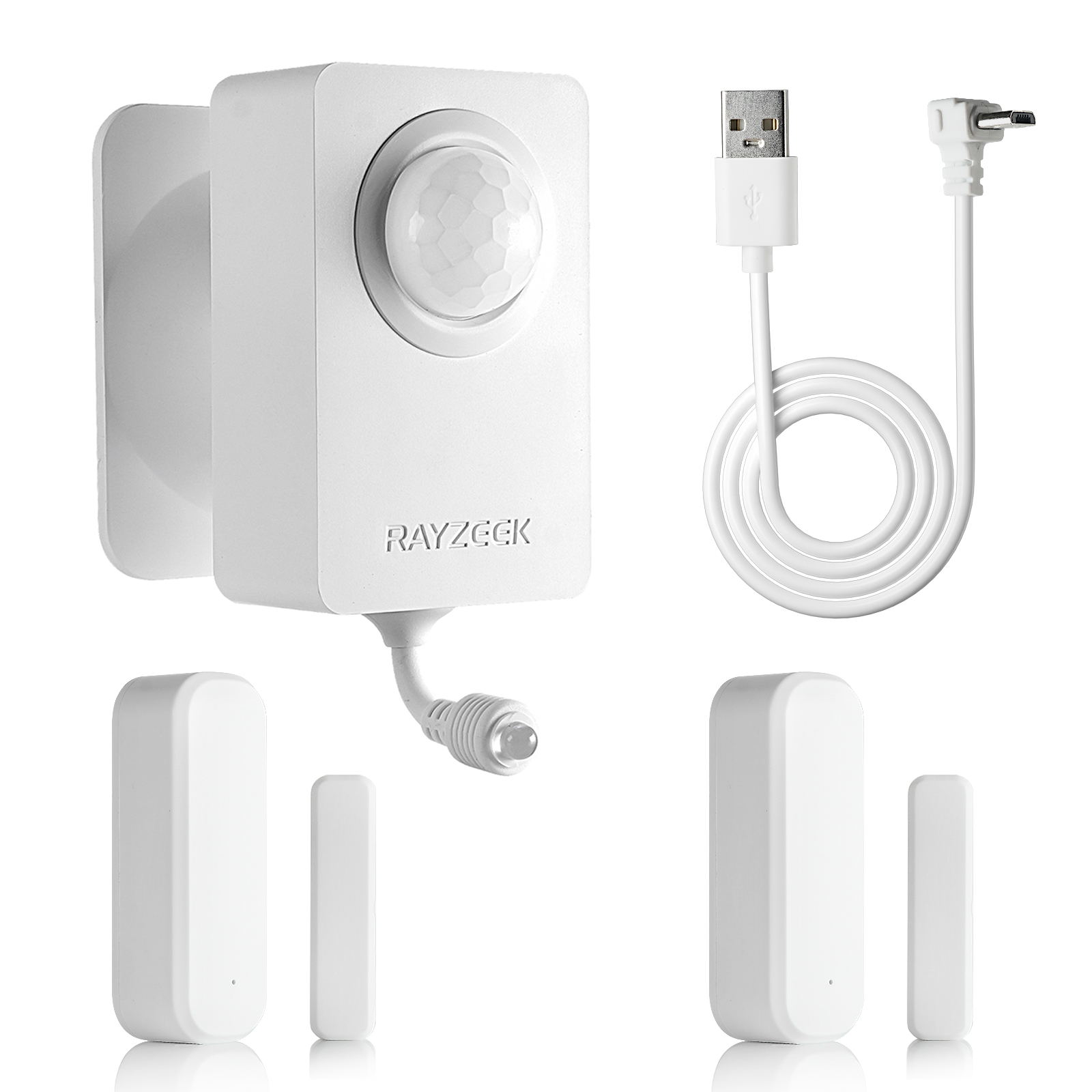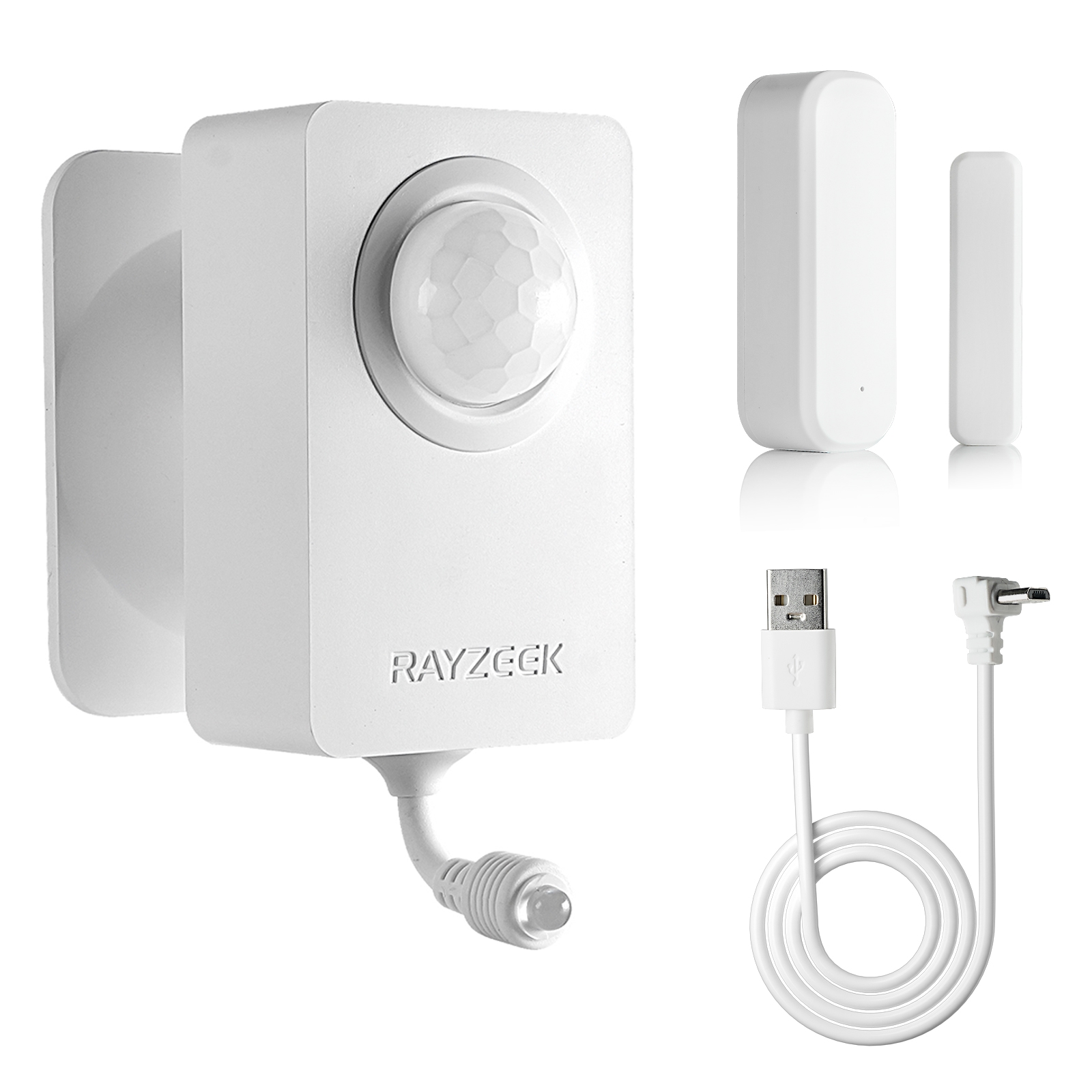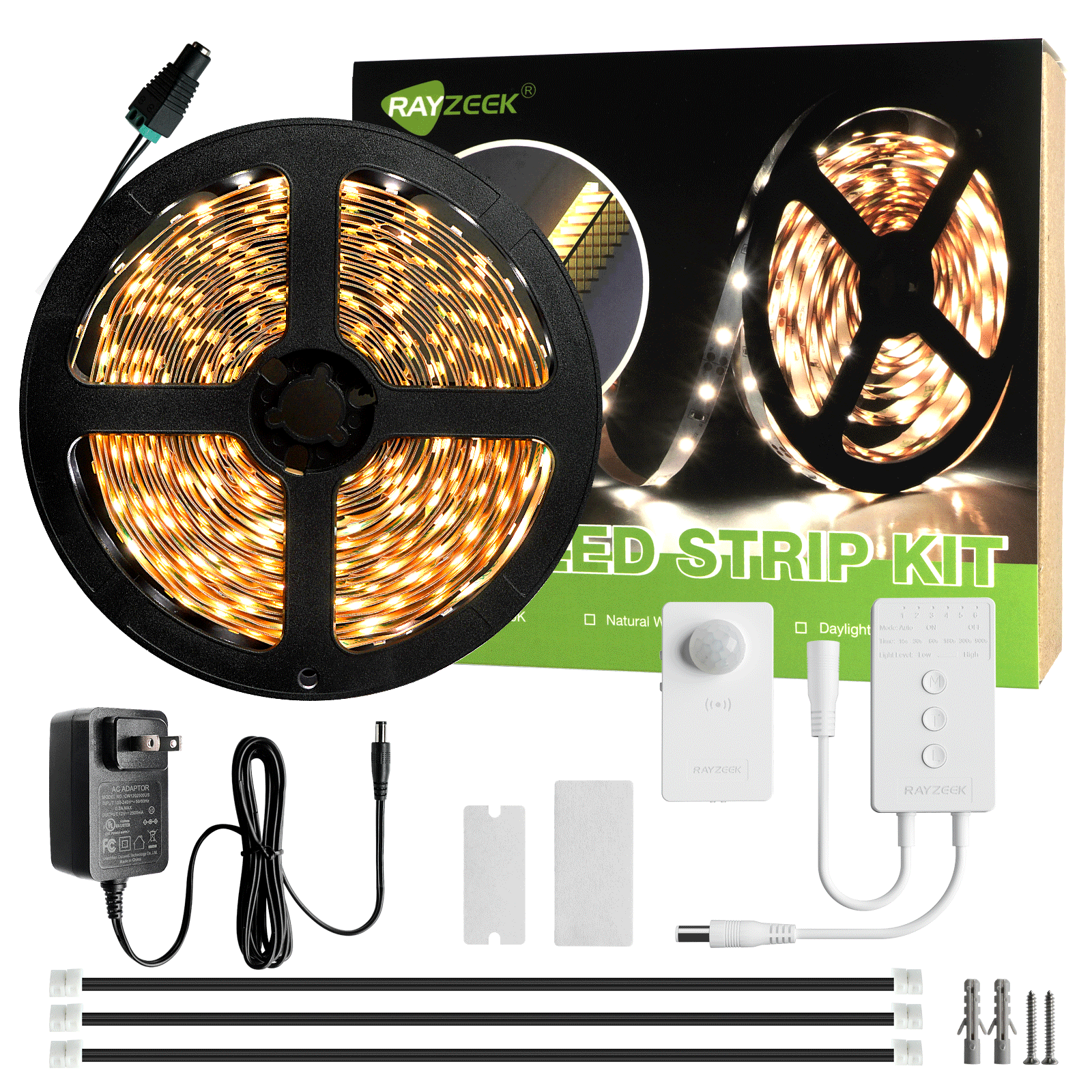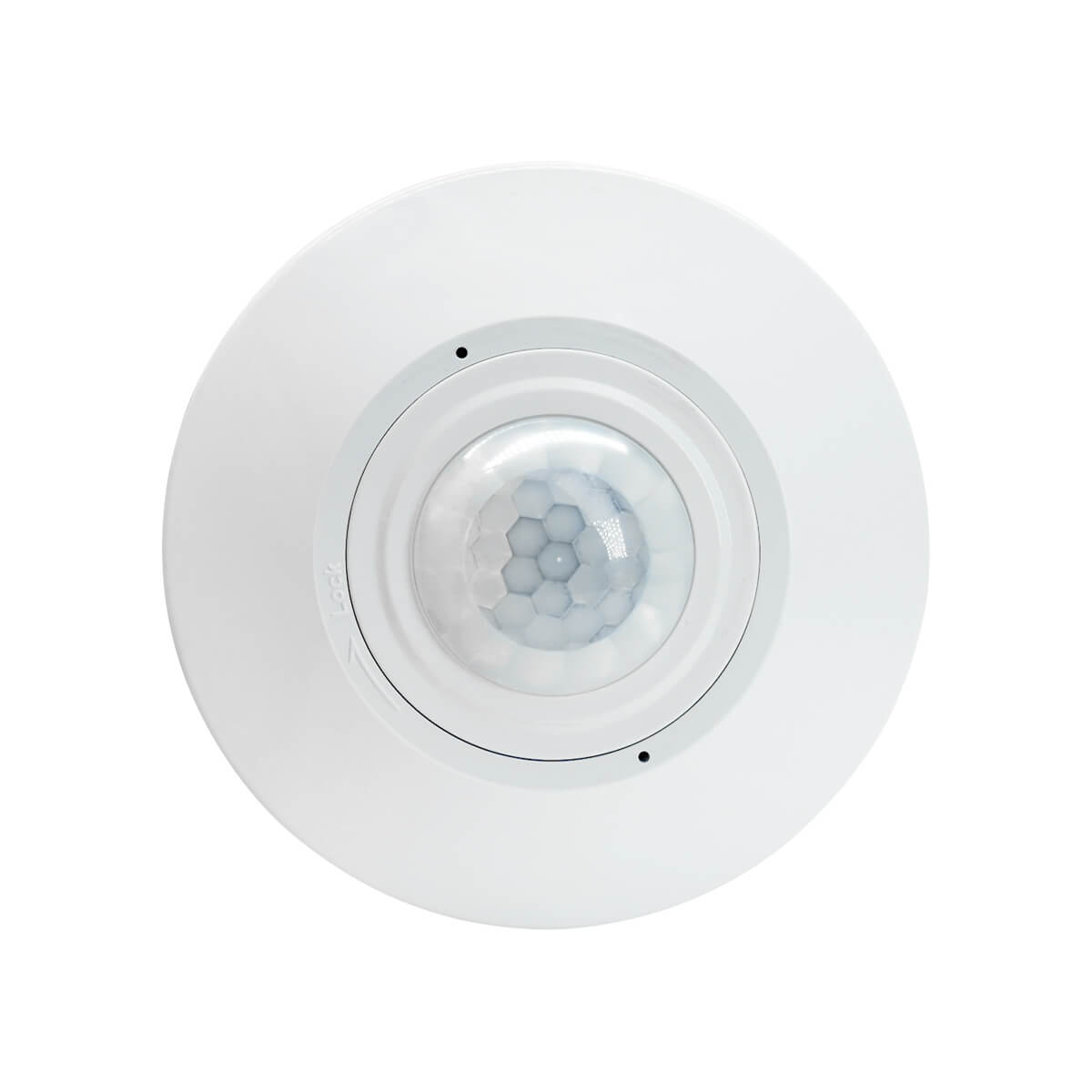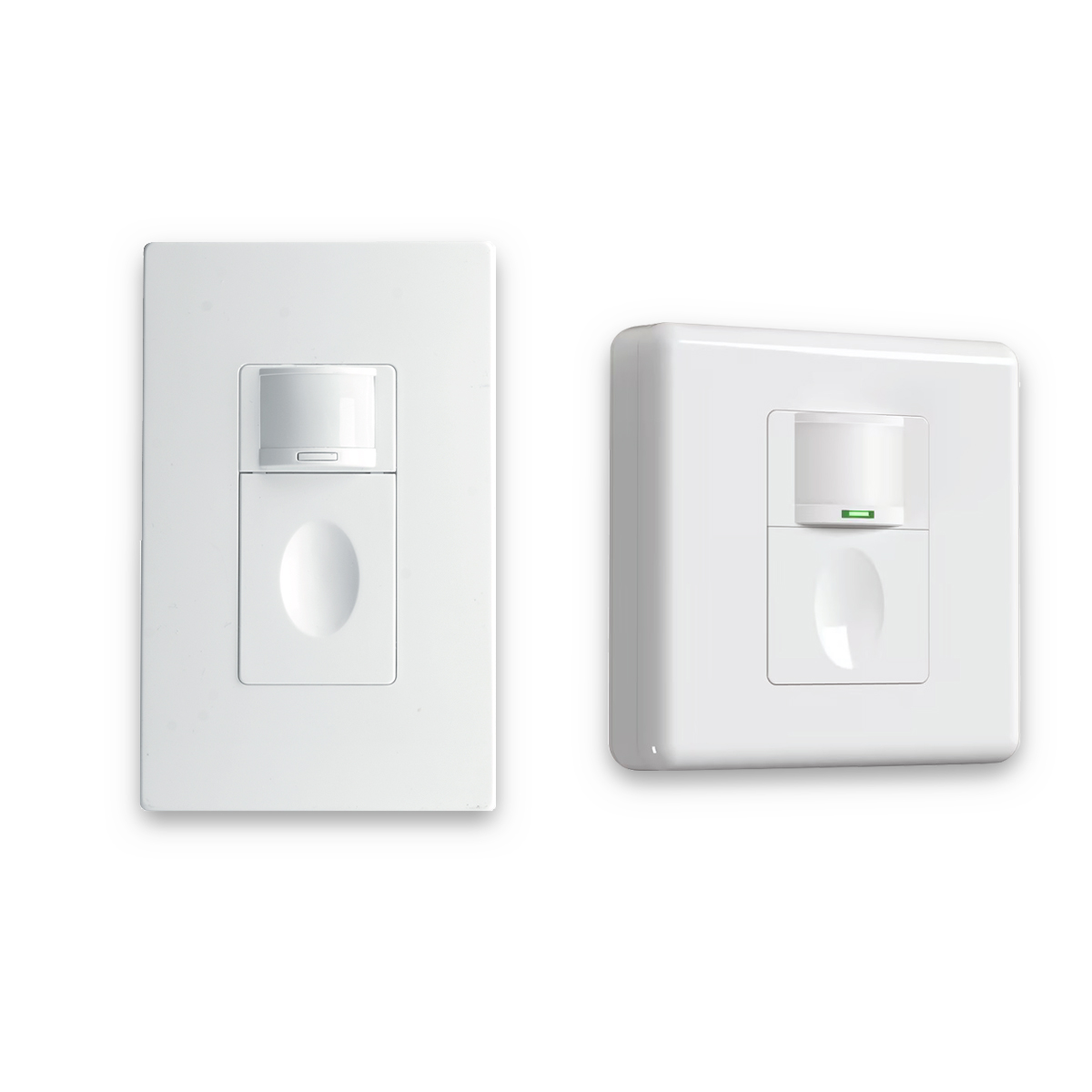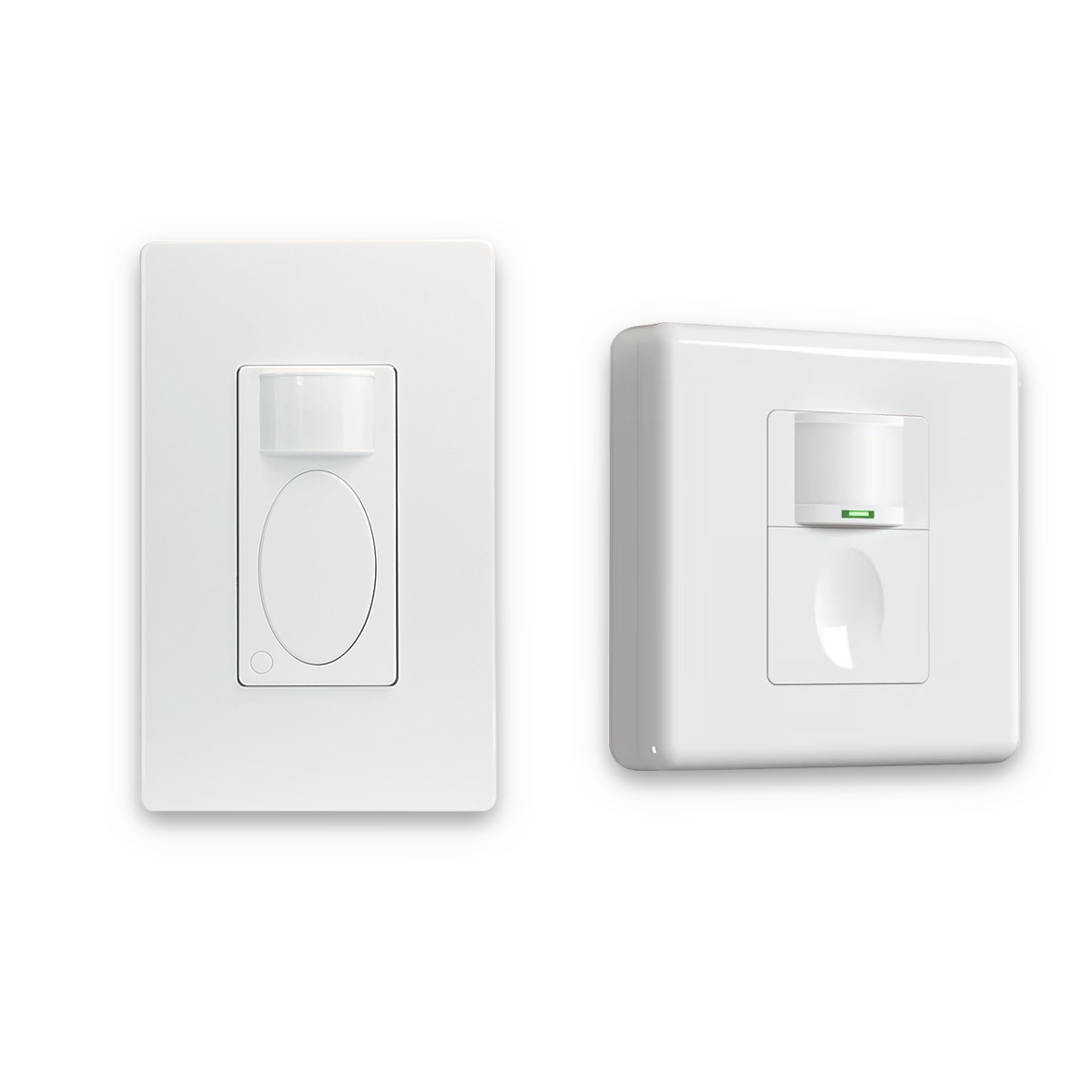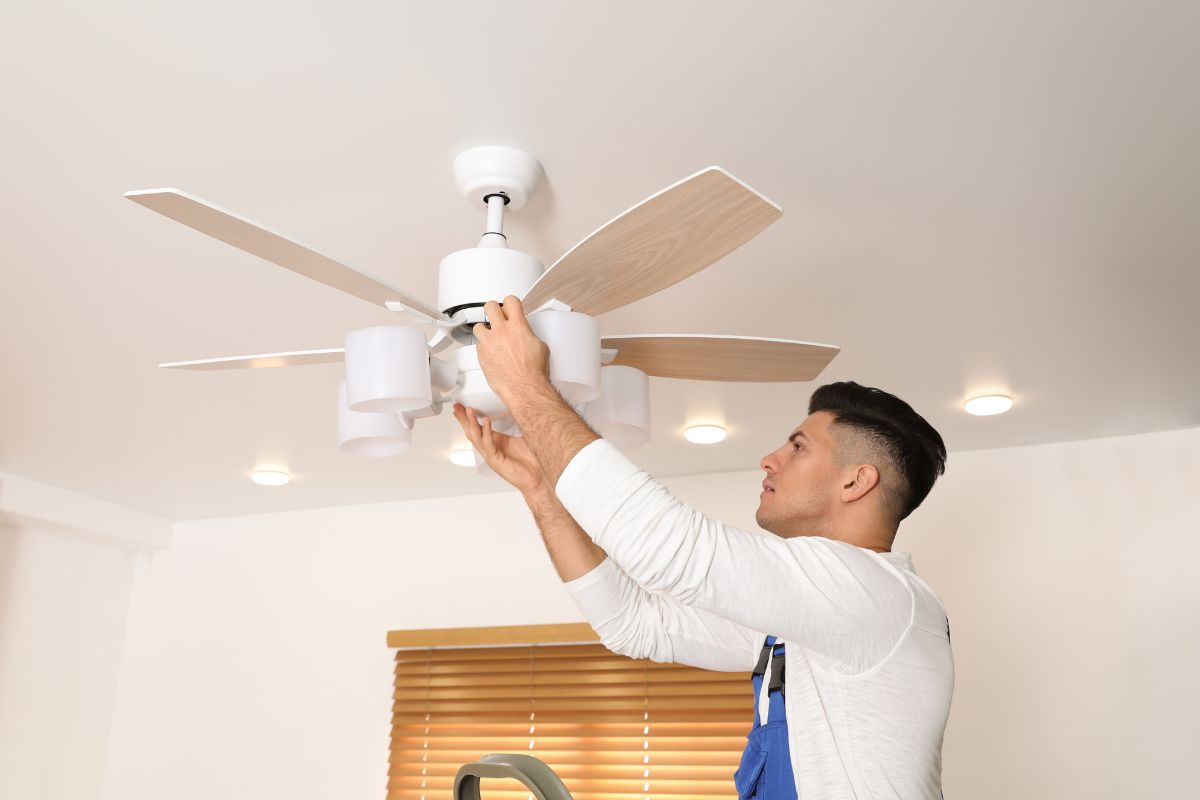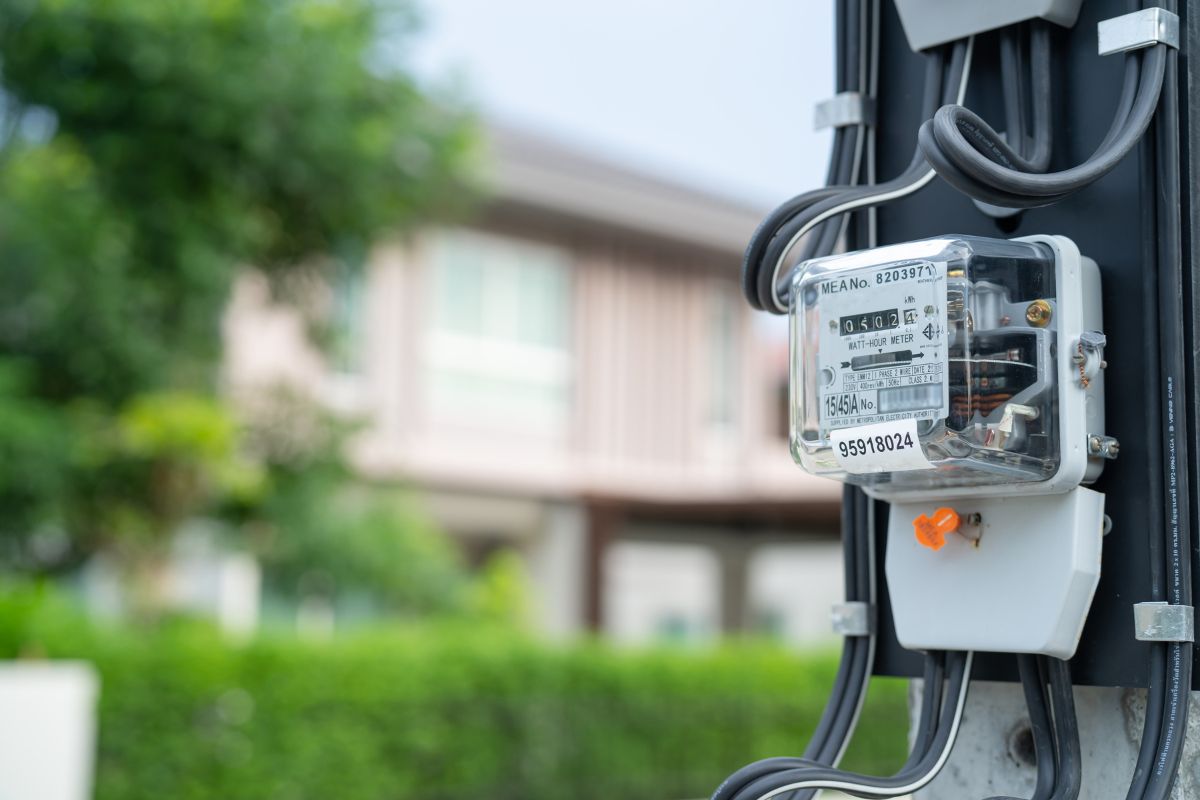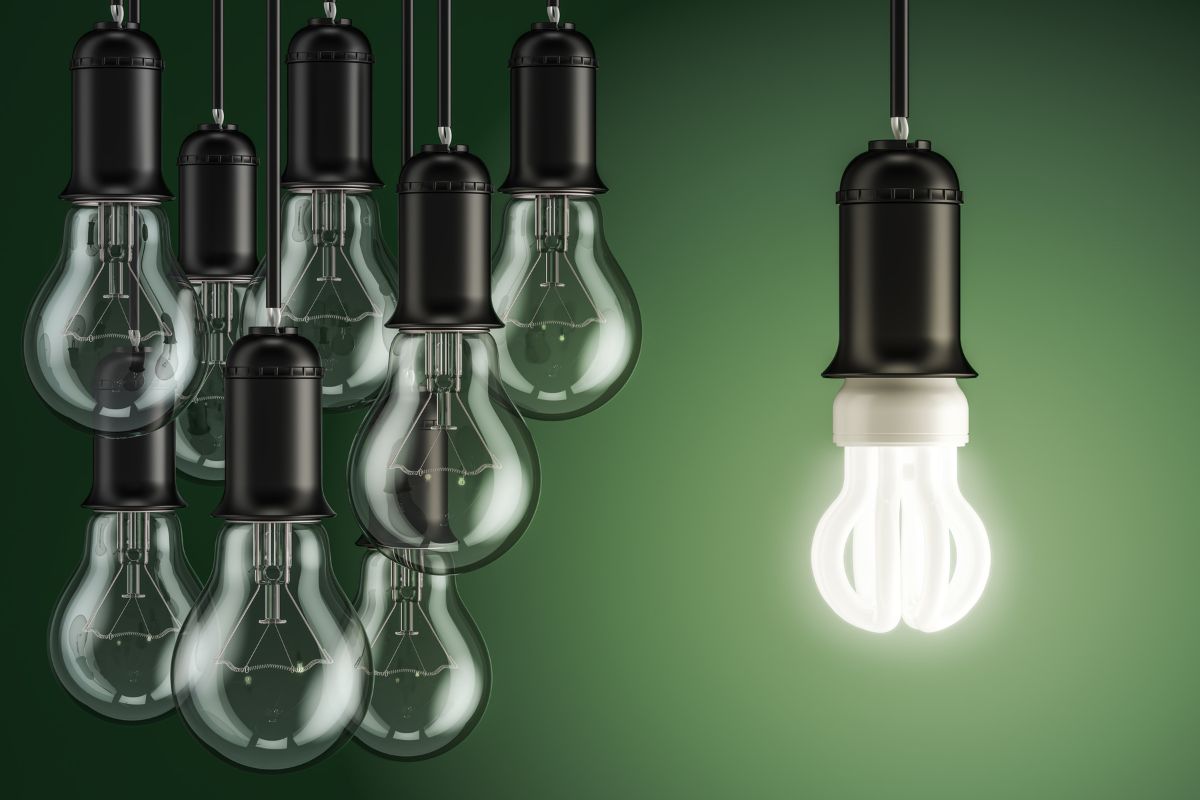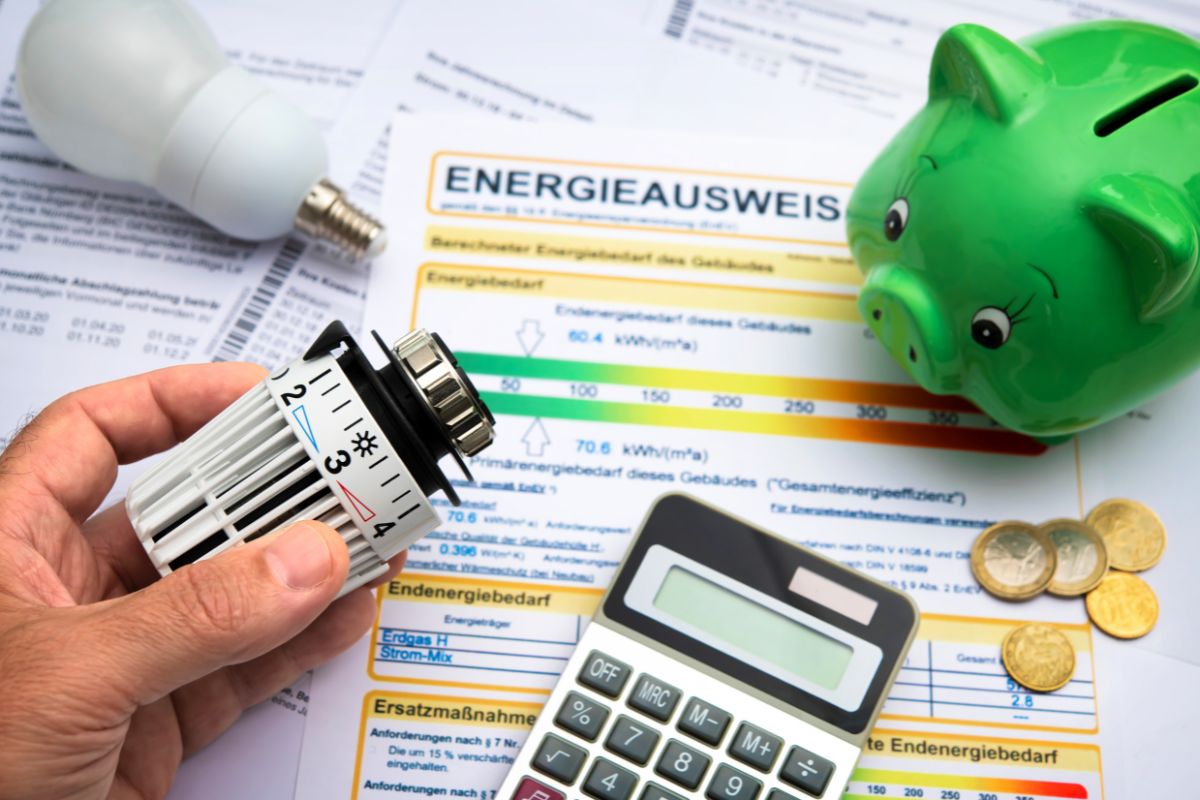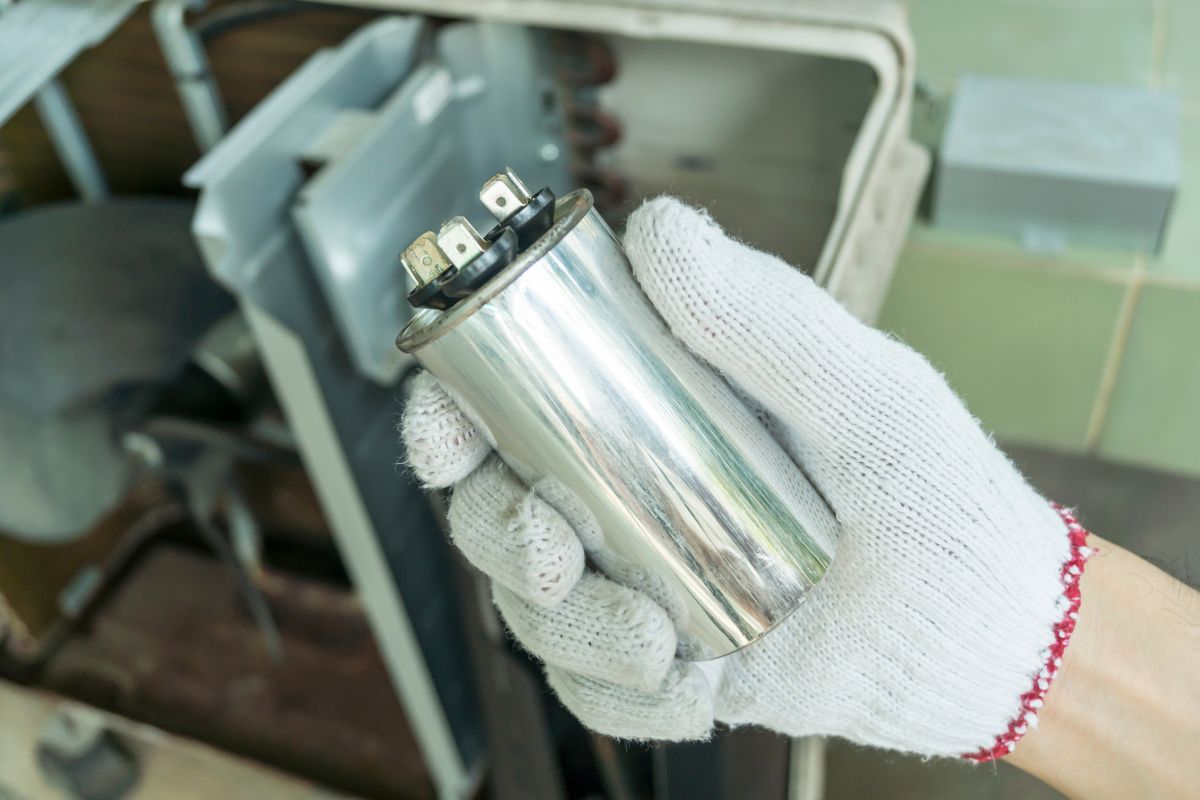ככל שהטמפרטורות עולות ועלויות האנרגיה נוסקות, מציאת דרכים לחסוך באנרגיה על מיזוג אוויר הפכה חשובה מאי פעם. האם ידעתם שמיזוג אוויר מהווה כ-12% מסך הוצאות האנרגיה הביתיות בארצות הברית? מאמר זה יבחן את האסטרטגיות היעילות ביותר להפחתת צריכת האנרגיה של המזגן שלכם מבלי לוותר על הנוחות. מהגדרות טמפרטורה אופטימליות ועד טכנולוגיה חכמה וטיפים לתחזוקה, נסקור את כל מה שאתם צריכים לדעת כדי לשמור על הבית שלכם קריר וחשבונות האנרגיה שלכם נמוכים.
הגדרות טמפרטורת מזגן אופטימליות לחיסכון מקסימלי באנרגיה
אופטימיזציה של הגדרות הטמפרטורה שלכם היא אחת הדרכים הפשוטות ביותר לחסוך באנרגיה על מיזוג אוויר. מהי בדיוק הטמפרטורה האידיאלית הן לנוחות והן ליעילות אנרגטית?
מהי הגדרת התרמוסטט המומלצת לחיסכון באנרגיה?
משרד האנרגיה האמריקני ממליץ להגדיר את התרמוסטט שלכם ל-78 מעלות פרנהייט (26 מעלות צלזיוס) כשאתם בבית וזקוקים לקירור. טמפרטורה זו יוצרת איזון בין נוחות ליעילות אנרגטית. אבל למה הטמפרטורה הזו נחשבת לאופטימלית?
ב-78°F, המזגן שלכם לא צריך לעבוד קשה כל כך כדי לשמור על הטמפרטורה הפנימית, במיוחד כשחם בחוץ. כל מעלה מתחת ל-78°F יכולה להגדיל את צריכת האנרגיה שלכם בכ-6-8%. אז, על ידי הגדרת התרמוסטט שלכם רק כמה מעלות גבוה יותר, אתם יכולים לחסוך סכום משמעותי בחשבונות האנרגיה שלכם.
כיצד עלי להתאים את הגדרות המזגן שלי כשאני לא נמצא או ישן?
כשאתם מחוץ לבית, מומלץ להגדיר את הטמפרטורה גבוהה ב-7-10 מעלות מההגדרה הרגילה שלכם. התאמה זו לבדה יכולה לחסוך לכם 5-15% בעלויות החשמל שלכם. אבל למה זה עובד?
הבית שלכם מתנהג כמו סוללה תרמית, צובר או מאבד חום לאט לאורך זמן. על ידי מתן אפשרות לטמפרטורה לעלות כשאתם לא נמצאים, אתם מצמצמים את כמות הזמן שהמזגן שלכם צריך לפעול, ובכך חוסכים באנרגיה. כשאתם חוזרים, המזגן עשוי להזדקק לעבוד קצת יותר קשה בהתחלה כדי לקרר את החלל, אבל החיסכון הכולל באנרגיה עולה על תקופה קצרה זו של צריכה מוגברת.
לשינה, קרן השינה הלאומית מציעה טמפרטורה בין 60-67°F (15.6-19.4°C) למנוחה אופטימלית. בעוד שזה עשוי להיראות מנוגד לאינטואיציה לחיסכון באנרגיה, חשוב לקחת בחשבון את האיזון בין נוחות ליעילות. שינה לקויה יכולה להיות בעלת השפעות בריאותיות משמעותיות, כך שאולי כדאי להשקיע את הוצאות האנרגיה הנוספות למען מנוחה טובה יותר.
האם יש טיפים נוספים לניהול טמפרטורה?
אכן, ישנן מספר אסטרטגיות שתוכל להשתמש בהן:
- השתמשו במאווררי תקרה: על ידי הפעלת מאוורר תקרה, אתם יכולים להעלות את הגדרת התרמוסטט שלכם בכ-4 מעלות מבלי להשפיע על רמת הנוחות שלכם. המאוורר יוצר אפקט צינון רוח, שגורם לכם להרגיש קרירים יותר מבלי להוריד בפועל את טמפרטורת החדר.
- נצלו אוורור טבעי: פתחו חלונות בלילה או במהלך בקרים וערבים קרירים כדי לקרר את הבית שלכם באופן טבעי. זה יכול לעזור להפחית את ההסתמכות שלכם על מזגן, במיוחד במזג אוויר נוח יותר.
- צרו משבי רוח צולבים: השתמשו במאווררים באופן אסטרטגי כדי ליצור זרימת אוויר בכל הבית שלכם. זה יכול לעזור להפיץ אוויר קריר בצורה יעילה יותר, ולהפחית את העומס על מערכת המזגן שלכם.
מינוף תרמוסטטים חכמים או ניתנים לתכנות לבקרת מזגן אוטומטית
בחיפוש אחר יעילות אנרגטית, תרמוסטטים חכמים וניתנים לתכנות הופיעו ככלים רבי עוצמה. אבל איך בדיוק מכשירים אלה תורמים לחיסכון באנרגיה, והאם הם שווים את ההשקעה?
מהם היתרונות בשימוש בתרמוסטט חכם?
תרמוסטטים חכמים מציעים מגוון יתרונות שיכולים להוביל לחיסכון משמעותי באנרגיה:
- תזמון אוטומטי: מכשירים אלה יכולים ללמוד את השגרה היומיומית שלכם ולהתאים אוטומטית את טמפרטורת הבית שלכם בהתאם. זה אומר שאתם לא מקררים בית ריק או מתעוררים לחדר שינה מחניק.
- שלט רחוק: עם אפליקציות לסמארטפון, אתם יכולים להתאים את טמפרטורת הבית שלכם מכל מקום. שכחתם להגביר את המזגן לפני שיצאתם לחופשה? אין בעיה – אתם יכולים לעשות זאת מהטלפון שלכם.
- דוחות שימוש באנרגיה: תרמוסטטים חכמים רבים מספקים דוחות מפורטים על צריכת האנרגיה שלכם, ועוזרים לכם לזהות דפוסים והזדמנויות לחיסכון נוסף.
- טכנולוגיה אדפטיבית: חלק מהדגמים המתקדמים יכולים אפילו לקחת בחשבון תחזיות מזג אוויר ואת הפרופיל התרמי של הבית שלכם כדי לייעל את מחזורי החימום והקירור.
בעוד שתרמוסטטים חכמים מציעים תכונות מתקדמות, ישנם פתרונות חדשניים אחרים לאוטומציה של המזגן שלכם ולחיסכון באנרגיה. לדוגמה, בקר חיישן תנועה למזגן RZ050 מספק גישה ייחודית לבקרת מזגן מבוססת תפוסה. מכשיר זה מכבה אוטומטית את המזגן שלכם כאשר הוא מזהה שחדר אינו מאוכלס, ומבטיח שאתם לא מבזבזים אנרגיה על קירור חלל ריק. זוהי דרך פשוטה אך יעילה לשפר את היעילות של יחידת המזגן הקיימת שלכם מבלי להזדקק לשיפוץ תרמוסטט מלא.
בקר חיישן תנועה למזגן | RZ050
מכבה אוטומטית את המזגן שלכם כשאתם עוזבים, וחוסך באנרגיה ללא מאמץ.
- מכבה אוטומטית את המזגן כשהחדר ריק.
- התקנת עשה זאת בעצמך קלה, תואמת לרוב המזגנים הנשלטים מרחוק.
- מצב לילה מונע כיבוי מזגן בזמן שאתם ישנים.
כמה אוכל לחסוך עם תרמוסטט חכם?
אמנם החיסכון יכול להשתנות בהתאם לדפוסי השימוש שלך ועלויות האנרגיה המקומיות, אך הפוטנציאל משמעותי. על פי ENERGY STAR, תרמוסטט חכם בשימוש נכון יכול לחסוך כ-$180 בשנה בעלויות חימום וקירור. במהלך חיי המכשיר, זה יכול להסתכם בחיסכון ניכר.
האם תרמוסטטים ניתנים לתכנות הם אלטרנטיבה טובה לתרמוסטטים חכמים?
אמנם לא מתקדמים כמו עמיתיהם ה"חכמים", תרמוסטטים ניתנים לתכנות עדיין מציעים תכונות חשובות לחיסכון באנרגיה. הם מאפשרים לכם להגדיר טמפרטורות שונות לשעות שונות ביום, ומבטיחים שהמזגן שלכם לא עובד קשה יותר מהנדרש כשאתם לא נמצאים או ישנים.
לדוגמה, אתם יכולים לתכנת את התרמוסטט שלכם להעלות את הטמפרטורה ב-7-10 מעלות במהלך שעות העבודה שלכם ולהוריד אותה שוב זמן קצר לפני שאתם חוזרים הביתה. בדרך זו, אתם לא מקררים בית ריק, אבל אתם עדיין חוזרים הביתה לסביבה נוחה.
איך אני בוחר בין תרמוסטט חכם לתכנות?
הבחירה בין תרמוסטט חכם לתכנותי מסתכמת לעתים קרובות בסגנון החיים והידע הטכנולוגי שלך. אם יש לך לוח זמנים קבוע ונוח לך לתכנת מכשיר, ייתכן שתרמוסטט לתכנות יספיק. עם זאת, אם אתה מעריך את הנוחות של שלט רחוק, רוצה דוחות אנרגיה מפורטים או שיש לך לוח זמנים משתנה, תרמוסטט חכם יכול להתאים יותר.
בסופו של דבר, שני הסוגים יכולים להוביל לחיסכון באנרגיה כאשר משתמשים בהם נכון. המפתח הוא לבחור מכשיר שאתם באמת תשתמשו בו במלוא הפוטנציאל שלו. אחרי הכל, אפילו התרמוסטט המתקדם ביותר לא יחסוך באנרגיה אם הוא לא מתוכנת או בשימוש נכון.
הבטחת ביצועים שיא באמצעות תחזוקה וניקוי שוטפים של המזגן
תחזוקה שוטפת היא חיונית לשמירה על מערכת מיזוג האוויר שלכם פועלת ביעילות. אבל מה בדיוק כוללת תחזוקת מזגן נכונה, וכיצד היא תורמת לחיסכון באנרגיה?
מדוע תחזוקה שוטפת של AC חשובה ליעילות אנרגטית?
תחזוקה שוטפת שומרת על מערכת המזגן שלכם פועלת בביצועי שיא, מה שמתורגם ישירות לחיסכון באנרגיה. מערכת מטופחת לא צריכה לעבוד קשה כל כך כדי לקרר את הבית שלכם, וצורכת פחות אנרגיה בתהליך. יתר על כן, תחזוקה שוטפת יכולה להאריך את תוחלת החיים של יחידת המזגן שלכם, ולחסוך לכם כסף על החלפות מוקדמות.
אילו משימות תחזוקה עשה זאת בעצמך אני יכול לבצע?
ישנן מספר משימות תחזוקה שבעלי בתים יכולים לבצע בקלות:
- נקה או החלף מסננים: זו אולי משימת התחזוקה החשובה והקלה ביותר. מסננים מלוכלכים מגבילים את זרימת האוויר, ומאלצים את המערכת שלך לעבוד קשה יותר. נקה או החלף את המסננים שלך כל 1-2 חודשים במהלך עונת הקירור. פעולה פשוטה זו לבדה יכולה להפחית את צריכת האנרגיה של המזגן שלך ב-5-15%.
- נקה פסולת סביב היחידה החיצונית: ודא שהאזור סביב היחידה החיצונית שלך נקי מעלים, גזרי דשא ופסולת אחרת. זה מאפשר זרימת אוויר תקינה ומונע מהיחידה לעבוד יתר על המידה.
- נקה את סלילי המאייד והמעבה: עם הזמן, סלילים אלה יכולים לצבור אבק ולכלוך, ולהפחית את יכולתם לספוג חום. ניקוי שנתי שלהם יכול לעזור לשמור על יעילות המערכת שלך.
- בדוק ויישר סנפירים: סנפירי האלומיניום על סלילי המאייד והמעבה יכולים להתכופף בקלות, ולהגביל את זרימת האוויר. השתמש ב"מסרק סנפירים" כדי ליישר אותם.
מתי עלי להתקשר לאיש מקצוע לצורך תחזוקת מזגן?
בעוד שתחזוקה עצמית חשובה, חשוב גם לבצע טיפול מקצועי במערכת שלך לפחות פעם בשנה. טכנאי HVAC מקצועי יכול:
- בדוק את רמות הקירור ומלא במידת הצורך
- בדוק ונקה את המדחס
- בדוק וכייל את התרמוסטט
- הדק חיבורים חשמליים
- שמן חלקים נעים
- בדוק את ניקוז הקונדנסט על סתימות
תחזוקה מקצועית יכולה לזהות בעיות פוטנציאליות לפני שהן הופכות לבעיות גדולות, ולהבטיח שהמערכת שלך פועלת ביעילות כל השנה.
כיצד תחזוקה מקצועית משפיעה על יעילות אנרגטית?
תחזוקה מקצועית יכולה להגביר משמעותית את יעילות המזגן שלך. לדוגמה, רמות קירור נמוכות יכולות להפחית את יעילות המערכת שלך ב-20% או יותר. איש מקצוע יכול לזהות ולתקן בעיות כאלה, ולהחזיר את המערכת שלך לביצועי שיא.
יתר על כן, מערכת מיזוג אוויר מטופחת יכולה לשמור על יעילותה לאורך זמן. ללא תחזוקה שוטפת, יעילות המזגן יכולה לרדת ב-5% או יותר בכל שנה. על ידי השקעה בתחזוקה מקצועית שנתית, אתה בעצם משמר את יעילות האנרגיה של המערכת שלך, מה שמתורגם לחיסכון עקבי באנרגיה שנה אחר שנה.
קבל השראה מתיקי חיישני התנועה של Rayzeek.
לא מוצא את מה שאתה רוצה? אל תדאג. תמיד יש דרכים חלופיות לפתור את הבעיות שלך. אולי אחד מתיק העבודות שלנו יכול לעזור.
זכור, העלות של תחזוקה שוטפת מתקזזת לעתים קרובות על ידי החיסכון באנרגיה ואורך החיים המורחב של מערכת המיזוג שלך. זוהי השקעה שמשתלמת הן בטווח הקצר והן בטווח הארוך, ושומרת על הבית שלך נוח ועל חשבונות האנרגיה שלך ניתנים לניהול.
שיפור יעילות הקירור באמצעות מאווררי תקרה וטכניקות אוורור
שימוש במאווררי תקרה וטכניקות אוורור נאותות משפר את יעילות הקירור, מפחית את העומס על מערכת המיזוג שלך וחוסך באנרגיה. חלק זה יבחן כיצד להשתמש בשיטות אלה ביעילות.
כיצד מאווררי תקרה משלימים מיזוג אוויר?
מאווררי תקרה לא באמת מורידים את הטמפרטורה של החדר, אבל הם יוצרים אפקט צינון רוח שגורם לך להרגיש קריר יותר. זה מאפשר לך להעלות את הגדרת התרמוסטט שלך בכ-4 מעלות מבלי להתפשר על הנוחות. אבל איך בדיוק זה עובד?
כאשר מאוורר תקרה מסתובב, הוא דוחף אוויר כלפי מטה, ויוצר משב רוח. אוויר נע זה עוזר לאדות זיעה מהעור שלך מהר יותר, וזה מנגנון הקירור הטבעי של הגוף שלך. כתוצאה מכך, אתה מרגיש קריר יותר למרות שטמפרטורת החדר לא השתנתה.
מהי הדרך הנכונה להשתמש במאווררי תקרה עם מזגן?
כדי למקסם את החיסכון באנרגיה, בצע את הטיפים הבאים:
- הפעל מאווררים נגד כיוון השעון בקיץ: כיוון זה דוחף אוויר כלפי מטה, ויוצר את משב הרוח המצנן שאתה רוצה.
- כבה מאווררים כשאתה עוזב את החדר: זכור, מאווררים מצננים אנשים, לא חדרים. אין תועלת בהפעלת מאוורר בחלל ריק.
- התאם את התרמוסטט שלך: אל תשכח להעלות את הגדרת טמפרטורת המזגן שלך בעת שימוש במאווררים. מכאן מגיע החיסכון האמיתי באנרגיה.
- השתמש במאווררים בחדרים מאוכלסים: התמקד בהפעלת מאווררים בחדרים שבהם אנשים נמצאים, במקום לקרר את כל הבית.
כיצד אוכל למנף אוורור טבעי כדי להפחית את השימוש במזגן?
אוורור טבעי יכול להיות כלי רב עוצמה להפחתת התלות שלך במיזוג אוויר, במיוחד במזג אוויר נוח יותר. הנה כמה אסטרטגיות:
- צור משבי רוח צולבים: פתח חלונות בצדדים מנוגדים של הבית שלך כדי לעודד תנועת אוויר. זה יכול להיות יעיל במיוחד בערב כאשר הטמפרטורות בחוץ יורדות.
- השתמש ב"אפקט המערם": אוויר חם עולה למעלה, כך שפתיחת חלונות בקומות התחתונות והעליונות יכולה ליצור זרימת אוויר טבעית, כאשר אוויר קריר נכנס מלמטה ואוויר חם יוצא מלמעלה.
- שטיפה לילית: פתח חלונות בלילה כדי להכניס אוויר קריר, ואז סגור אותם ומשוך וילונות במהלך היום כדי לשמור על האוויר הקריר בפנים.
- השתמש במאווררי חלונות באופן אסטרטגי: הנח מאווררים בחלונות כדי למשוך אוויר קריר פנימה או לדחוף אוויר חם החוצה, בהתאם לשעה ביום ולטמפרטורה בחוץ.
האם יש טכניקות אוורור אחרות שכדאי לי לשקול?
כן, ישנן עוד כמה אסטרטגיות שיכולות לעזור:
- מאווררים לכל הבית: מאווררים חזקים אלה, המותקנים בדרך כלל בעליית הגג, יכולים למשוך במהירות אוויר קריר דרך חלונות פתוחים ולפלוט אוויר חם דרך פתחי אוורור בעליית הגג.
- אוורור בעליית הגג: אוורור נאות של עליית הגג יכול למנוע הצטברות חום, ולהפחית את העומס על מערכת המיזוג שלך.
- מאווררי פליטה למטבח ולחדר האמבטיה: השתמש בהם כדי להסיר חום ולחות הנוצרים מבישול ורחצה.
מזעור אובדן אנרגיה באמצעות בידוד משופר ואיטום אוויר
בואו נחקור כיצד בידוד ואיטום אוויר תורמים ליעילות אנרגטית ואת הצעדים שתוכלו לנקוט כדי לשפר אותם. למרות שמערכות קירור יעילות חיוניות לחיסכון באנרגיה, חשוב באותה מידה להבטיח שהאוויר הקריר יישאר בתוך הבית שלך.
מדוע בידוד ואיטום אוויר חשובים ליעילות המזגן?
בידוד ואיטום אוויר פועלים יחד כדי ליצור מעטפת תרמית סביב הבית שלך. מעטפת זו משרתת שתי מטרות עיקריות:
- זה מאט את העברת החום מהחוץ לפנים במזג אוויר חם (ולהיפך במזג אוויר קר).
- זה מונע דליפות אוויר, שיכולות לאפשר לאוויר ממוזג לברוח ולאוויר לא ממוזג להיכנס.
כאשר הבית שלך מבודד היטב ואטום כראוי, מערכת המיזוג שלך לא צריכה לעבוד קשה כל כך כדי לשמור על טמפרטורה נוחה. זה גורם לצריכת אנרגיה נמוכה יותר, וכתוצאה מכך, חשבונות אנרגיה נמוכים יותר.
מהם תחומי המפתח להתמקד בהם לבידוד?
בעוד שבידוד חשוב בכל הבית שלך, ישנם אזורים שחשובים במיוחד:
- עליית גג: ככל שהחום עולה, עליית גג מבודדת בצורה גרועה יכולה להיות מקור מרכזי לאובדן אנרגיה. משרד האנרגיה האמריקני ממליץ על בידוד R-38 עד R-60 בעליות גג, תלוי באזור האקלים שלך.
- קירות: גם קירות חיצוניים וגם קירות בין חללים ממוזגים ולא ממוזגים צריכים להיות מבודדים היטב.
- רצפות: אם יש לך מרחב זחילה או מרתף לא מחומם, בידוד הרצפה יכול למנוע בריחת אוויר קריר כלפי מטה.
- תעלות: אם יש לך מערכת מיזוג מרכזית, בידוד תעלות בחללים לא ממוזגים יכול למנוע אובדן אנרגיה משמעותי.
איך אוכל לשפר את איטום האוויר בביתי?
איטום אוויר כולל מציאה ואיטום של דליפות במעטפת הבית שלך. הנה כמה צעדים שתוכל לנקוט:
- בצע בדיקה ויזואלית: חפש רווחים סביב חלונות, דלתות, שקעי חשמל ובמקומות שבהם כלי עזר נכנסים לבית.
- השתמש בפסי איטום: הדבק פסי איטום סביב דלתות וחלונות כדי ליצור אטימה הדוקה כאשר הם סגורים.
- אטום רווחים וסדקים: השתמש באיטום כדי לאטום רווחים וסדקים קטנים במעטפת הבניין.
- טפל בפתחים גדולים יותר: השתמש בקצף מתרחב או בחומרים מתאימים אחרים כדי לאטום פתחים גדולים יותר, כגון אלה סביב צינורות או פתחי אוורור.
- אל תשכח את עליית הגג: שים לב במיוחד לאיטום כל רווח ברצפת עליית הגג, מכיוון שלעתים קרובות זהו מקור מרכזי לדליפת אוויר.
האם עלי לשקול שירותי בידוד ואיטום אוויר מקצועיים?
אמנם יש משימות רבות של בידוד ואיטום אוויר עשה זאת בעצמך שתוכל לבצע, אך שירותים מקצועיים יכולים להציע מספר יתרונות:
- הערכה מקיפה: אנשי מקצוע יכולים לערוך ביקורת אנרגיה יסודית, לעתים קרובות באמצעות ציוד מיוחד כמו בדיקות דלת מפוח ומצלמות אינפרא אדום כדי לזהות דליפות אוויר נסתרות ורווחי בידוד.
- מומחיות בבחירת חומרים: הם יכולים להמליץ על חומרי הבידוד וטכניקות איטום האוויר המתאימים ביותר לבית ולמזג האוויר הספציפיים שלך.
- גישה לציוד מיוחד: עבודות בידוד מסוימות, כמו בידוד מנופח, דורשות ציוד מיוחד שאנשי מקצוע יכולים לגשת אליו.
- שיקולי בטיחות: טיפול נכון בחומרי בידוד ועבודה בחללים סגורים כמו עליות גג דורשים אמצעי זהירות שאנשי מקצוע הוכשרו בהם.
- יעילות לטווח ארוך: התקנה מקצועית מבטיחה שבידוד ואיטום אוויר נעשים כהלכה, וממקסמים את החיסכון באנרגיה לטווח ארוך.
איזה סוג של החזר השקעה אני יכול לצפות מבידוד משופר ואיטום אוויר?
ההחזר על ההשקעה עבור בידוד ואיטום אוויר יכול להיות משמעותי. על פי משרד האנרגיה האמריקני, בעלי בתים יכולים לחסוך בממוצע 15% בעלויות חימום וקירור (או בממוצע 11% בעלויות אנרגיה כוללות) על ידי איטום אוויר של בתיהם והוספת בידוד בעליות גג, רצפות מעל חללי זחילה וקצות קורות מרתף נגישים.
החיסכון המדויק יהיה תלוי בגורמים כמו האקלים המקומי שלך, מחירי האנרגיה והמצב הנוכחי של בידוד הבית שלך. עם זאת, בעלי בתים רבים מגלים שהחיסכון באנרגיה מקזז במהירות את ההשקעה הראשונית, לעתים קרובות תוך מספר שנים.
הפחתת רווח חום סולארי עם כיסויי חלונות יעילים
חלונות מכניסים אור טבעי ומספקים נופים. הם יכולים להיות גם מקור משמעותי לחום, מה שמאלץ את המזגן שלך לעבוד קשה יותר. אבל איך אפשר להקל על הבעיה הזו מבלי להקריב את היתרונות של אור טבעי?
מדוע כיסויי חלונות חשובים ליעילות אנרגטית?
כיסויי חלונות הם יותר מסתם אלמנטים דקורטיביים; הם מרכיב מרכזי בניהול רווח החום והאובדן של הבית שלך. על פי משרד האנרגיה האמריקני, כ-76% מאור השמש הפוגע בחלונות סטנדרטיים עם זיגוג כפול נכנס לבית והופך לחום. על ידי שימוש בכיסויי חלונות יעילים, אתה יכול להפחית משמעותית את רווח החום הזה, להקל על העומס על מערכת המיזוג שלך ולחסוך באנרגיה.
מחפשים פתרונות לחיסכון באנרגיה המופעלים בתנועה?
פנו אלינו לקבלת חיישני תנועה מלאים PIR, מוצרים לחיסכון באנרגיה המופעלים בתנועה, מתגי חיישני תנועה ופתרונות מסחריים לתפוסה/פנויה.
אילו סוגי כיסויי חלונות הם היעילים ביותר לחיסכון באנרגיה?
מספר סוגים של כיסויי חלונות יכולים לעזור להפחית את עליית החום:
- תריסים מחזירי אור: לתריסים אלה יש משטח מחזיר אור מאוד בצד אחד, שיכול להחזיר עד 80% מחום השמש כאשר הם מותקנים כראוי.
- צלונים סלולריים: ידועים גם בשם צלוני חלת דבש, אלה יוצרים כיסי אוויר המספקים שכבת בידוד נוספת.
- וילונות האפלה: וילונות עבים אלה יכולים לחסום את אור השמש לחלוטין, ולהפחית משמעותית את חדירת החום.
- מסכי שמש: מסכי חלונות דמויי רשת אלה יכולים לחסום עד 70% מאנרגיית השמש לפני שהיא נכנסת לביתכם.
- ציפויי חלונות: ניתן להדביק יריעות מתכת דקות אלה ישירות על הזכוכית כדי להחזיר חום תוך מתן אפשרות לאור להיכנס.
כיצד עלי להשתמש בכיסויי חלונות ליעילות אנרגטית מרבית?
כדי להפיק את המרב מכיסויי החלונות שלך:
- סגרו כיסויים במהלך החלקים החמים ביותר של היום, במיוחד על חלונות הפונים דרומה ומערבה.
- השתמשו בבטנות בהירות על וילונות ווילונות כדי להחזיר יותר אור שמש החוצה.
- התקינו כיסויים קרוב ככל האפשר לחלון ואטמו אותם לקיר בצדדים ובתחתית כדי ליצור מחסום אוויר.
- שקלו כיסויים ממונעים או אוטומטיים שניתן לתכנת אותם להתאים בהתאם לשעה ביום או לרמות אור השמש.
האם יש פתרונות הצללה אחרים שכדאי לי לשקול?
כן, ישנן כמה אפשרויות נוספות שיכולות לשפר את ביצועי האנרגיה של החלונות שלכם:
- סוככים: אלה יכולים להפחית את חדירת חום השמש בעד 65% על חלונות הפונים דרומה ו-77% על חלונות הפונים מערבה.
- תריסים חיצוניים: ניתן לסגור אותם במהלך החלקים החמים ביותר של היום כדי לחסום חום לפני שהוא מגיע לחלון.
- חלונות סערה Low-E: ניתן להוסיף אותם לחלונות קיימים כדי להפחית את מעבר החום.
- שמיכות חלון: ניתן לגלגל את הצללות המבודדות האלה בלילה או בימים מעוננים לבידוד נוסף.
זכרו, האפקטיביות של כיסויי חלונות יכולה להשתנות בהתאם לאקלים שלכם, לכיוון החלונות שלכם ולצרכים הספציפיים שלכם. ייתכן שכדאי להתייעץ עם איש מקצוע לטיפול בחלונות כדי לקבוע את הפתרון הטוב ביותר עבור הבית שלכם. עם הגישה הנכונה, תוכלו להפוך את החלונות שלכם ממקור לחדירת חום לנכס באסטרטגיית חיסכון האנרגיה שלכם.
מזעור עומס המזגן על ידי ניהול מכשירי חשמל ופעילויות המייצרים חום
בעוד שאנו מתמקדים לעתים קרובות בשמירה על חום מחוץ לבתים שלנו, חשוב באותה מידה לנהל את החום הנוצר בתוך הבית. מכשירי חשמל ופעילויות יומיומיות רבות יכולים להוסיף חום משמעותי לסביבה הפנימית שלכם, ולהגדיל את העומס על מערכת המזגן שלכם.
אילו מכשירי חשמל ביתיים נפוצים מייצרים הכי הרבה חום?
מספר מכשירי חשמל יכולים לתרום לחדירת חום פנימית:
- תנורים וכיריים: בישול, במיוחד אפייה, יכול להעלות את הטמפרטורות הפנימיות באופן משמעותי.
- מייבשי כביסה: מכשירי חשמל אלה מייצרים גם חום וגם לחות.
- מדיחי כלים: החום ממחזור הייבוש יכול לחמם את המטבח שלכם.
- נורות ליבון: אלה ממירות חלק גדול מצריכת האנרגיה שלהן לחום.
- מחשבים ומכשירי חשמל אחרים: בעוד שמכשירים בודדים עשויים שלא לייצר הרבה חום, ההשפעה המצטברת יכולה להיות מורגשת.
איך אוכל לנהל את מקורות החום האלה כדי להפחית את העומס על המזגן שלי?
הנה כמה אסטרטגיות למזעור רווח חום ממכשירים:
- תזמנו את הפעילויות שלכם: נסו להשתמש במכשירי חשמל המייצרים חום במהלך החלקים הקרירים יותר של היום, כגון שעות הבוקר המוקדמות או הערב המאוחרות.
- השתמשו בשיטות בישול חלופיות: בימים חמים, שקלו להשתמש במיקרוגל, בסיר בישול איטי או בגריל חיצוני במקום בתנור.
- ייבשו כלים ובגדים באוויר: דלגו על מחזור הייבוש החם במדיח הכלים שלכם ושקלו לתלות בגדים לייבוש במקום להשתמש במייבש.
- עברו לתאורת LED: נורות LED מייצרות פחות חום משמעותית מנורות ליבון.
- נתקו מכשירי חשמל מהחשמל כשאינם בשימוש: מכשירים רבים מייצרים חום גם במצב המתנה.
האם יש פעילויות אחרות שיכולות לתרום לעליית חום בתוך הבית?
כן, מספר פעילויות יומיומיות יכולות להוסיף חום ולחות לביתך:
- מקלחות חמות: אלה יכולות להגדיל משמעותית את הלחות בחדר האמבטיה.
- גיהוץ: פעילות זו מייצרת גם חום וגם אדים.
- פעילות גופנית: פעילות גופנית מעלה את טמפרטורת הגוף ומגבירה את הלחות באמצעות הזעה.
איך אוכל למתן את עליית החום מפעילויות אלה?
קחו בחשבון את הטיפים האלה:
- השתמשו במאווררי פליטה: הפעילו מאווררי פליטה בחדר האמבטיה ובמטבח במהלך ואחרי פעילויות שמייצרות חום או לחות.
- צרו מרחב אימונים ייעודי: אם אפשר, הקצו אזור מאוורר היטב לאימונים, רצוי הרחק מאזורי המגורים העיקריים.
- גהצו בגדים במנות: אם אתם חייבים לגהץ, עשו זאת בבת אחת באזור מאוורר היטב, ואז כבו את המגהץ ועזבו את החלל להתקרר.
- התקלחו במים קרירים יותר: הורדת טמפרטורת המים אפילו במעט יכולה להפחית את כמות האדים המיוצרים.
האם טכנולוגיית בית חכם יכולה לעזור בניהול מכשירי חשמל המייצרים חום?
אכן, טכנולוגיית בית חכם יכולה להיות כלי רב ערך בניהול רווח חום פנימי:
- תקעים חכמים: ניתן להשתמש בהם כדי לכבות אוטומטית מכשירים המייצרים חום כאשר אינם בשימוש.
- תרמוסטטים חכמים: אלה יכולים להתאים את הגדרות המזגן שלכם בהתבסס על הפעילויות שלכם והחום שמייצרים מכשירים.
- תאורה חכמה: תאורת LED אוטומטית יכולה להבטיח שהאורות דולקים רק כשצריך, ולהפחית ייצור חום מיותר.
השגת חיסכון לטווח ארוך עם יחידות ומכשירי חשמל חסכוניים באנרגיה
אופטימיזציה של מערכת המיזוג הנוכחית שלכם יכולה להוביל לחיסכון משמעותי באנרגיה, אבל מגיע רגע שבו שדרוג ליחידה חסכונית יותר באנרגיה הופך לפתרון החסכוני ביותר. אבל איך יודעים מתי הגיע הזמן לשדרג, ומה צריך לחפש ביחידת מיזוג חדשה?
מתי עלי לשקול לשדרג את יחידת המזגן שלי?
מספר גורמים עשויים להצביע על כך שהגיע הזמן לשדרוג:
- גיל: אם יחידת המיזוג שלכם בת יותר מ-10-15 שנים, סביר להניח שהיא הרבה פחות יעילה מדגמים מודרניים.
- תיקונים תכופים: אם אתם מוציאים יותר על תיקונים, ייתכן שיהיה חסכוני יותר להשקיע ביחידה חדשה.
- חשבונות חשמל עולים: אם עלויות האנרגיה שלכם עולות בהתמדה למרות תחזוקה נאותה, ייתכן שהמזגן שלכם מאבד יעילות.
- קירור לא עקבי: אם חלק מהחדרים חמים מדי ואחרים קרירים מדי, ייתכן שהמערכת הנוכחית שלכם אינה מתאימה לצרכים שלכם.
מה עלי לחפש ביחידת מיזוג אוויר חסכונית באנרגיה?
כשקונים יחידת מיזוג אוויר חדשה, שימו לב לגורמים הבאים:
- דירוג SEER: יחס יעילות האנרגיה העונתית (SEER) מודד את תפוקת הקירור חלקי תשומה אנרגטית. ככל שדירוג ה-SEER גבוה יותר, כך היחידה יעילה יותר. חפשו יחידות עם דירוג SEER של לפחות 15, כאשר הדגמים היעילים ביותר מגיעים עד 25 SEER.
- אישור ENERGY STAR: יחידות עם אישור זה עומדות בהנחיות קפדניות ליעילות אנרגטית שנקבעו על ידי הסוכנות להגנת הסביבה של ארה"ב ומשרד האנרגיה.
- מדחסים בעלי מהירות משתנה: אלה יכולים להתאים את המהירות שלהם כדי לשמור על טמפרטורה עקבית, תוך שימוש בפחות אנרגיה ממדחסים בעלי מהירות אחת שנכבים ונדלקים לעתים קרובות.
- קירור דו-שלבי: תכונה זו מאפשרת למזגן לפעול בהספק נמוך יותר כאשר אין צורך בקיבולת מלאה, וחוסכת אנרגיה.
- תכונות חכמות: חפשו יחידות שיכולות להשתלב עם תרמוסטטים חכמים לשליטה ותזמון טמפרטורה מדויקים יותר.
כמה אוכל לחסוך עם יחידת מיזוג אוויר חסכונית באנרגיה?
החיסכון הפוטנציאלי יכול להיות משמעותי. לדברי ENERGY STAR, אם כל מזגן מרכזי שנמכר בארה"ב יעמוד בדרישות ENERGY STAR, החיסכון בעלויות האנרגיה יגדל ליותר מ-$1.5 מיליארד דולר מדי שנה, ויימנעו 17 מיליארד פאונד של פליטות גזי חממה שנתיות.
ברמה האישית, החלפת מזגן בן 10 שנים בדגם חדש ויעיל ביותר ונקיטת פעולות אחרות לשיפור היעילות הכוללת של מערכת הקירור שלכם יכולה לחסוך עד 50% בעלויות אנרגיית הקירור שלכם.
האם יש מכשירי חשמל חסכוניים באנרגיה אחרים שכדאי לי לשקול?
מכשירים אחרים יכולים גם לתרום ליעילות האנרגטית הכוללת שלך:
- מקררים: מקררים עם אישור ENERGY STAR חסכוניים יותר באנרגיה בכ-9% מדגמים העומדים בתקן הפדרלי המינימלי ליעילות אנרגטית.
- מכונות כביסה: מכונות כביסה עם אישור ENERGY STAR משתמשות בכ-25% פחות אנרגיה ו-33% פחות מים ממכונות כביסה רגילות.
- מדיחי כלים: מדיחי כלים מוסמכי ENERGY STAR חסכוניים יותר באנרגיה בכ-12% וחסכוניים יותר במים ב-30% מדגמים סטנדרטיים.
- מחממי מים: שקלו מחמם מים עם משאבת חום, שיכול להיות חסכוני יותר באנרגיה פי 2-3 ממחממי מים חשמליים קונבנציונליים.
מה לגבי מערכות מיני-מפוצלות ללא צינורות?
מזגני מיני-ספליט ללא צינורות יכולים להיות אופציה מצוינת ליעילות אנרגטית, במיוחד בבתים ללא תעלות אוויר קיימות. מערכות אלה נמנעות מאובדן האנרגיה הקשור לתעלות אוויר, אשר יכול להוות יותר מ-30% מצריכת האנרגיה למיזוג אוויר.
מיני-מזגנים מפוצלים מציעים מספר יתרונות:
- קירור אזורי: אתם יכולים לקרר רק את החדרים שבהם אתם משתמשים, ולחסוך באנרגיה.
- ללא אובדן בתעלות: זה יכול לשפר משמעותית את היעילות בהשוואה למערכות מרכזיות.
- גמישות: ניתן להתקין אותם במקומות שונים, מה שהופך אותם לאידיאליים עבור תוספות או שיפוצים.
השוואת יעילות אנרגטית: מיני-מזגן מפוצל ללא תעלות לעומת מערכות מיזוג אוויר מסורתיות
כשמדובר בבחירת מערכת מיזוג אוויר, בעלי בתים מוצאים את עצמם לעתים קרובות מתלבטים בין מערכות מיני-מזגן מפוצלות ללא תעלות לבין יחידות מיזוג מרכזיות מסורתיות. לשניהם יש יתרונות, אבל איך הם משתווים מבחינת יעילות אנרגטית? בואו נפרק את זה.
מערכות מיני מפוצלות ללא צינור
מערכות מיני-מזגן מפוצלות ללא תעלות מורכבות מיחידת מדחס חיצונית אחת או יותר ויחידות טיפול אוויר פנימיות, המחוברות באמצעות צינור המוביל את כבל החשמל, צינור קירור, צינור יניקה וניקוז עיבוי.
יתרונות:
- ללא תעלות: זה מבטל את אובדן האנרגיה הקשור לתעלות, אשר יכול להוות יותר מ-30% מצריכת האנרגיה במערכות מיזוג מרכזיות.
- קירור אזורי: ניתן לשלוט בכל יחידה פנימית בנפרד, מה שמאפשר לך לקרר רק חדרים מאוכלסים.
- גמישות: ניתן להתקין אותם במקומות שונים, מה שהופך אותם לאידיאליים עבור תוספות חדרים או שיפוצים.
- יעילות: למערכות מיני-ספליט רבות יש דירוגי SEER גבוהים, שלעתים קרובות נעים בין 16 ל-30.
חסרונות:
- עלות התחלתית גבוהה יותר: ההתקנה הראשונית יכולה להיות יקרה יותר ממערכות מסורתיות.
- אסתטיקה: יש אנשים שחושבים שהיחידות הפנימיות פחות מושכות מבחינה ויזואלית מפתחי אוורור של מיזוג מרכזי.
יחידות מיזוג אוויר מסורתיות
מערכות מיזוג אוויר מרכזיות מסורתיות משתמשות ברשת של תעלות כדי להפיץ אוויר מקורר בכל הבית.
יתרונות:
- קירור לכל הבית: הם יכולים לקרר בית שלם באופן עקבי.
- רכיבים נסתרים: הרכיבים הפנימיים מוסתרים ברובם, כאשר רק פתחי אוורור גלויים בחדרים.
- עלות התחלתית נמוכה יותר: התקנה ראשונית היא לרוב זולה יותר ממערכות מיני-ספליט.
חסרונות:
- אובדן תעלות: אנרגיה עלולה ללכת לאיבוד עקב דליפות או בידוד לקוי בתעלות.
- פחות יכולת אזור: בעוד שאזור אפשרי, זה מורכב ויקר יותר ליישום מאשר עם מיני-ספליטים.
- מגבלות התקנה: הם דורשים מקום לתעלות, מה שיכול להיות מאתגר בחלק מהבתים.
השוואה של עלויות ויעילות
- יעילות אנרגטית: למיני-ספליטים ללא תעלות יש בדרך כלל יתרון כאן. היעדר תעלות מבטל מקור מרכזי לאובדן אנרגיה. בנוסף, היכולת לקרר רק חדרים מאוכלסים יכולה להוביל לחיסכון משמעותי באנרגיה.
- עלויות התקנה: ליחידות מיזוג אוויר מסורתיות יש בדרך כלל עלויות התחלתיות נמוכות יותר, במיוחד אם כבר קיימות תעלות. עם זאת, אם יש צורך להתקין או לתקן משמעותית תעלות, העלויות יכולות לעלות באופן משמעותי.
- עלויות תפעול: בשל היעילות הגבוהה יותר שלהם, למיני-ספליטים יש לרוב עלויות תפעול נמוכות יותר לאורך זמן. עם זאת, זה יכול להשתנות בהתאם לדפוסי השימוש ומחירי האנרגיה המקומיים.
- תחזוקה: שתי המערכות דורשות תחזוקה שוטפת, אך ייתכן שמיני-ספליטים קלים וזולים יותר לתחזוקה בשל העיצוב הפשוט והנגישות שלהם.
- אורך חיים: שתי המערכות, כאשר הן מתוחזקות כראוי, יכולות להחזיק מעמד 15-20 שנה. עם זאת, לרכיבים החיצוניים של מיני-ספליטים עשוי להיות יתרון קל באריכות ימים בשל גודלם הקטן יותר בדרך כלל ופעולת לחץ נמוכה יותר.
איזו מערכת מתאימה לך?
הבחירה בין מיני-ספליט ללא תעלות למערכת מיזוג אוויר מסורתית תלויה בגורמים שונים:
- פריסת הבית: אם לבית שלך אין תעלות קיימות, מערכת מיני-ספליט עשויה להיות חסכונית יותר.
- צרכי קירור: אם אתה צריך לקרר רק אזורים ספציפיים בבית שלך, מערכת מיני-ספליט מציעה יותר גמישות.
- תקציב: שקול הן עלויות התחלתיות והן עלויות תפעול ארוכות טווח בעת קבלת ההחלטה.
- אקלים: באזורים עם קיץ ארוך וחם, היעילות הגבוהה יותר של מיני-ספליטים עשויה להוביל לחיסכון משמעותי יותר לאורך זמן.
בסופו של דבר, גם מיני-ספליט ללא תעלות וגם מערכות מיזוג אוויר מסורתיות יכולות להיות בחירות חסכוניות באנרגיה כאשר הן בגודל והתקנה נכונים. האפשרות הטובה ביותר עבורך תהיה תלויה בנסיבות הספציפיות שלך, בצרכי הקירור ובשיקולי התקציב. תמיד מומלץ להתייעץ עם איש מקצוע מוסמך בתחום HVAC שיכול להעריך את הבית שלך ולספק המלצות מותאמות אישית.
הבנת תפקיד הלחות ביעילות ובנוחות של מיזוג האוויר
כאשר אנו חושבים על מיזוג אוויר, אנו מתמקדים לעתים קרובות רק בטמפרטורה. עם זאת, הלחות ממלאת תפקיד מכריע הן בנוחות שלנו והן ביעילות של מערכות המיזוג שלנו.
מדוע לחות חשובה ליעילות ונוחות של מזגן?
לחות, כמות אדי המים באוויר, משפיעה על האופן שבו אנו תופסים טמפרטורה. לחות גבוהה יכולה לגרום לנו להרגיש חמים יותר מהטמפרטורה בפועל מכיוון שהיא מפחיתה את היעילות של מנגנון הקירור הטבעי של גופנו - הזעה. כאשר האוויר כבר רווי בלחות, הזיעה לא מתאדה בקלות, ומשאירה אותנו בתחושה חמה ודביקה.
עבור מערכות מיזוג אוויר, לחות גבוהה מציבה מספר אתגרים:
- עומס עבודה מוגבר: מערכות מיזוג אוויר לא רק מקררות את האוויר אלא גם מסירות ממנו לחות. רמות לחות גבוהות יותר פירושן שהמערכת צריכה לעבוד קשה יותר כדי להסיר לחות, ולצרוך יותר אנרגיה.
- קושי בשמירה על נוחות: גם אם טמפרטורת האוויר קרירה, לחות גבוהה עלולה לגרום לחלל להרגיש לא נוח.
- פוטנציאל לעובש וטחב: עודף לחות עלול להוביל לצמיחת עובש, שעלול לפגוע בביתכם ולגרום לסיכונים בריאותיים.
מהן רמות הלחות המומלצות לנוחות ויעילות אופטימליות?
על פי ASHRAE (האגודה האמריקאית למהנדסי חימום, קירור ומיזוג אוויר), טווח הלחות היחסית האידיאלי לנוחות ובריאות האדם הוא בין 30% ל-60%. עם זאת, ליעילות אנרגטית ולמניעת צמיחת עובש, מומלץ לעתים קרובות לשמור על לחות פנימית מתחת ל-50%.
בסביבות לחות גבוהה, מומלץ לשאוף לקצה התחתון של טווח זה, ואף מתחת ל-50%. זה עוזר למנוע עיבוי על משטחים קרירים ומפחית את הסיכון לצמיחת עובש.
איך אוכל לנהל את רמות הלחות כדי לשפר את יעילות המזגן?
ישנן מספר אסטרטגיות שתוכל להשתמש בהן כדי לנהל את הלחות:
- השתמשו במייבש לחות: באקלים לח במיוחד, מייבש לחות נפרד יכול לעזור להפחית את העומס על מערכת המיזוג שלכם.
- ודאו גודל מתאים של המזגן: יחידת מיזוג אוויר גדולה מדי תקרר את החלל במהירות אך ייתכן שלא תפעל מספיק זמן כדי להסיר לחות מהאוויר כראוי. ודאו שהמזגן שלכם בגודל המתאים לחלל שלכם.
- שמרו על הגדרות טמפרטורה עקביות: התאמות תכופות של התרמוסטט שלכם עלולות להוביל לתנודות בלחות. נסו לשמור על טמפרטורה עקבית.
- השתמשו במאווררי פליטה: הפעילו מאווררי פליטה בחדרי אמבטיה ומטבחים כדי להסיר עודפי לחות במקור.
- אטמו דליפות אוויר: מנעו כניסת אוויר חיצוני לח לביתכם על ידי איטום פערים וסדקים במעטפת הבית.
- שקלו מערכת אוורור לכל הבית: מערכות אלו יכולות לעזור לנהל את רמות הלחות הפנימיות תוך שיפור איכות האוויר הכוללת.
כיצד מערכות מיזוג אוויר חכמות מטפלות בלחות?
מערכות מיזוג אוויר חכמות ומודרניות רבות מגיעות עם חיישני לחות מובנים ויכולות להתאים את פעולתן בהתבסס על טמפרטורה ורמות לחות כאחד. מערכות אלה יכולות:
- התאימו את מהירויות המאוורר כדי לייעל את הסרת הלחות.
- השתמשו במדחסים בעלי מהירות משתנה כדי לספק בקרת לחות מדויקת יותר.
- שלבו עם תרמוסטטים חכמים כדי לספק נתוני לחות מפורטים ואפשרויות שליטה.
מה לגבי אקלים יבש? האם לחות עדיין מהווה דאגה?
אוויר יבש מדי יכול גם להשפיע על הנוחות והיעילות. באקלים יבש:
- ייתכן שמערכות מיזוג אוויר יצטרכו לפעול בתדירות נמוכה יותר, מה שעלול לחסוך באנרגיה.
- עם זאת, אוויר יבש מאוד עלול לגרום לאי נוחות, חשמל סטטי ואף לבעיות בריאותיות.
- במקרים אלה, מכשיר אדים עשוי להיות מועיל לשמירה על רמות לחות אופטימליות.
מקסום יעילות המיזוג באמצעות מיקום אסטרטגי של רהיטים וזרימת אוויר
לפריסת החדר שלכם ולמיקום הרהיטים שלכם יכולה להיות השפעה מפתיעה על יעילות המיזוג שלכם. זרימת אוויר תקינה היא חיונית כדי שמערכת המיזוג שלכם תפעל ביעילות, ומכשולים במקומות הלא נכונים עלולים לפגוע בביצועיה.
מדוע מיקום רהיטים חשוב ליעילות המזגן?
מיקום הרהיטים משפיע על יעילות המזגן בכמה דרכים:
- חסימת זרימת אוויר: רהיטים גדולים יכולים לחסום פתחי אוורור, ולמנוע מאוויר מקורר להסתובב כראוי.
- שימור חום: רהיטים הממוקמים קרוב מדי לפתחי אוורור יכולים לספוג אוויר קריר לפני שיש לו סיכוי להסתובב.
- הפרעה לתרמוסטט: רהיטים ליד התרמוסטט שלכם יכולים להשפיע על יכולתו לקרוא במדויק את טמפרטורת החדר.
מהן השיטות המומלצות למיקום רהיטים?
כדי לייעל את ביצועי המיזוג שלכם, שקלו את ההנחיות הבאות:
- שמרו על פתחי אוורור פנויים: ודאו שפתחי האוורור לא חסומים על ידי רהיטים, וילונות או חפצים אחרים. באופן אידיאלי, השאירו לפחות 10 אינץ' של מרווח סביב פתחי האוורור.
- צרו נתיבים לאוויר: סדרו רהיטים כדי לאפשר נתיבים ברורים של זרימת אוויר בכל החדר.
- שימו לב לתרמוסטט: הרחיקו מכשירי חשמל ומנורות המייצרים חום מהתרמוסטט שלכם, מכיוון שהם עלולים לגרום לו לקרוא בצורה שגויה את טמפרטורת החדר.
- השתמשו ברהיטים לטובתכם: ניתן להשתמש בפריטים גדולים כמו כונניות ספרים כדי לבודד קירות חיצוניים, ולהפחית את מעבר החום מבחוץ.
- קחו בחשבון את גובה התקרה: בחדרים עם תקרות גבוהות, השתמשו ברהיטים בעלי פרופיל נמוך כדי לאפשר זרימת אוויר טובה יותר.
איך אוכל לשפר את זרימת האוויר בביתי?
מעבר למיקום רהיטים, ישנן מספר אסטרטגיות לשיפור זרימת האוויר:
- השתמשו במאווררי תקרה: כאשר משתמשים בהם בשילוב עם מיזוג אוויר, מאווררי תקרה יכולים לעזור לפזר אוויר קריר בצורה אחידה יותר.
- השאירו דלתות פנימיות פתוחות: זה מאפשר זרימת אוויר טובה יותר בכל הבית.
- השתמשו במאווררי רצפה או שולחן: אלה יכולים לעזור להזיז אוויר באזורים עומדים בחדר.
- שקלו להשתמש במסיטי אוורור: אלה יכולים לעזור לכוון את זרימת האוויר למקום שבו היא נחוצה ביותר.
- תחזקו מסנני אוויר נקיים: מסננים מלוכלכים מגבילים את זרימת האוויר, מה שמאלץ את המזגן לעבוד קשה יותר.
מה לגבי יחידות מיזוג אוויר צמודות קיר?
עבור יחידות צמודות קיר, כגון אלה במערכות מיני-ספליט ללא צינורות, שקול טיפים אלה:
- ודאו שהאזור שמול היחידה פנוי מרהיטים או עיצוב גבוהים.
- הימנעו מהצבת רהיטים גדולים ישירות מתחת ליחידות המותקנות על הקיר.
- קחו בחשבון את מיקום היחידה בעת תכנון פריסת החדרים כדי להבטיח חלוקת אוויר מיטבית.
כיצד רהיטים משפיעים על חום וקירור קורן?
ריהוט יכול גם לשחק תפקיד בניהול חום קורן:
- השתמשו ברהיטים בהירים בחדרים שטופי שמש כדי להחזיר חום במקום לספוג אותו.
- שקלו להשתמש בשטיחים על רצפות אריחים או עץ קשיח כדי לספק בידוד ולהגביר את הנוחות.
- בחדרים עם חלונות גדולים, הניחו רהיטים ליצירת צל והפחתת אור שמש ישיר על אזורי הישיבה.
האם טכנולוגיית בית חכם יכולה לעזור בניהול זרימת אוויר?
אכן, טכנולוגיית בית חכם יכולה לסייע באופטימיזציה של זרימת האוויר:
- פתחי אוורור חכמים: ניתן לתכנת אותם להיפתח ולהיסגר בהתבסס על תפוסת החדר או הטמפרטורה הרצויה.
- מאווררים חכמים: ניתן לשלב אותם עם מערכת מיזוג האוויר שלכם כדי להתאים אוטומטית את המהירות בהתבסס על רמות הטמפרטורה והלחות.
- תרמוסטטים חכמים: אלה יכולים ללמוד את ההרגלים שלכם ולהתאים את דפוסי הקירור בהתאם, מה שעלול לשפר את ניהול זרימת האוויר הכולל.
טמפרטורה קבועה לעומת התאמות מבוססות תפוסה: איזו גישה חוסכת יותר אנרגיה?
אחד הנושאים השנויים ביותר במחלוקת בניהול אנרגיה ביתי הוא האם יעיל יותר לשמור על טמפרטורה קבועה או להתאים את התרמוסטט בהתבסס על תפוסה. לשתי הגישות יש תומכים, אבל איזו מהן באמת חוסכת יותר אנרגיה? בואו נצלול לפרטים ונחקור את היתרונות והחסרונות של כל שיטה.
מהי גישת הטמפרטורה הקבועה?
גישת הטמפרטורה הקבועה כוללת הגדרת התרמוסטט שלכם לטמפרטורה נוחה והשארתו שם, ללא קשר אם אתם בבית או לא. התיאוריה מאחורי שיטה זו היא שלוקח יותר אנרגיה לקרר בית חם מאשר לשמור על טמפרטורה קבועה.
יתרונות:
- נוחות עקבית: הבית שלכם תמיד בטמפרטורה המועדפת עליכם.
- תנודות טמפרטורה מופחתות: זה יכול להיות מועיל לבתים עם בעיות לחות.
- פחות עומס על מערכת המיזוג: המערכת לא צריכה לעבוד קשה כדי לקרר בית חם.
חסרונות:
- בזבוז אנרגיה: אתם מקררים את הבית שלכם גם כשאתם לא שם כדי ליהנות ממנו.
- חשבונות אנרגיה גבוהים יותר: קירור קבוע יכול להוביל לצריכת חשמל גבוהה יותר.
מהי גישת ההתאמה המבוססת על תפוסה?
שיטה זו כוללת התאמת התרמוסטט שלכם בהתבסס על מתי אתם בבית וערים. בדרך כלל, הייתם מגדירים את הטמפרטורה גבוהה יותר כשאתם לא נמצאים או ישנים, ומורידים אותה כשאתם בבית ופעילים.
יתרונות:
- פוטנציאל לחיסכון משמעותי באנרגיה: אתם לא מקררים בית ריק.
- חשבונות אנרגיה נמוכים יותר: פחות זמן קירור יכול לתרגם לעלויות נמוכות יותר.
- נוחות הניתנת להתאמה אישית: אתם יכולים להגדיר טמפרטורות שונות לשעות שונות ביום.
חסרונות:
- אי נוחות פוטנציאלית: אתם עלולים לחזור לבית חם ולצטרך לחכות שהוא יתקרר.
- עלייה אפשרית בשחיקה של מערכת מיזוג האוויר: שינויי טמפרטורה תכופים עלולים להעמיס על המערכת.
איזו גישה חסכונית יותר באנרגיה?
התשובה אינה חד משמעית ויכולה להיות תלויה במספר גורמים:
- אקלים: באקלים חם במיוחד, ייתכן שיהיה יעיל יותר לשמור על טמפרטורה קבועה כדי למנוע מהבית שלכם להתחמם יתר על המידה.
- בידוד בית: בתים מבודדים היטב שומרים על טמפרטורה טובה יותר, מה שהופך התאמות המבוססות על תפוסה ליעילות יותר.
- סוג מערכת מיזוג אוויר: מערכות מודרניות מסוימות בעלות מהירות משתנה מתוכננות לפעול ברציפות במהירויות נמוכות יותר, מה שיכול להיות יעיל יותר ממחזורי הפעלה/כיבוי תכופים.
- משך ההיעדרות: לתקופות קצרות (מספר שעות), שמירה על טמפרטורה קבועה עשויה להיות יעילה יותר. לתקופות ארוכות יותר, התאמת הטמפרטורה יכולה לחסוך יותר אנרגיה.
- ההפרש בטמפרטורה: ככל שההפרש בין טמפרטורות ה-"מחוץ לבית" וה-"בבית" שלכם גדול יותר, כך סביר יותר שתחסכו יותר אנרגיה באמצעות התאמות המבוססות על תפוסה.
מה אומרים המומחים?
לדברי משרד האנרגיה האמריקני, באפשרותך לחסוך עד 10% בשנה בעלויות החימום והקירור שלך על-ידי החזרת התרמוסטט שלך ב-7°-10°F למשך 8 שעות ביום מההגדרה הרגילה שלו. זה תומך בגישה של התאמה המבוססת על תפוסה.
אולי אתה מעוניין
זה לא אומר שכדאי לכבות את המזגן לחלוטין כשאתם לא נמצאים. הגדרת הטמפרטורה גבוהה ב-7-10 מעלות כשאתם לא בבית יעילה יותר בדרך כלל מאשר כיבוי והדלקה של המערכת.
כיצד תרמוסטטים חכמים יכולים לעזור?
תרמוסטטים חכמים יכולים להציע את הטוב משני העולמות:
- הם יכולים ללמוד את לוח הזמנים שלכם ולהתאים טמפרטורות באופן אוטומטי בהתבסס על ההרגלים שלכם.
- הם יכולים להתחיל לקרר את הבית שלכם לפני שאתם מגיעים, ולהבטיח נוחות מבלי לבזבז אנרגיה.
- חלקם יכולים לזהות תפוסה ולהתאים את ההגדרות בהתאם.
- הם מספקים נתוני שימוש מפורטים באנרגיה, ועוזרים לכם לייעל את ההגדרות שלכם ליעילות מרבית.
מה השורה התחתונה?
בעוד שהתאמות המבוססות על תפוסה מציעות בדרך כלל יותר פוטנציאל לחיסכון באנרגיה, הגישה היעילה ביותר עבורכם תהיה תלויה בנסיבות הספציפיות שלכם. שקלו גורמים כמו האקלים שלכם, בידוד הבית, סוג מערכת מיזוג האוויר ולוח הזמנים היומי שלכם.
אם אינכם בטוחים, נסו את שתי השיטות למשך שבוע כל אחת והשוו את חשבונות האנרגיה שלכם. אתם יכולים גם לשקול להשקיע בתרמוסטט חכם, שיכול לעזור לכם למצוא את האיזון האופטימלי בין נוחות ליעילות אנרגטית.

